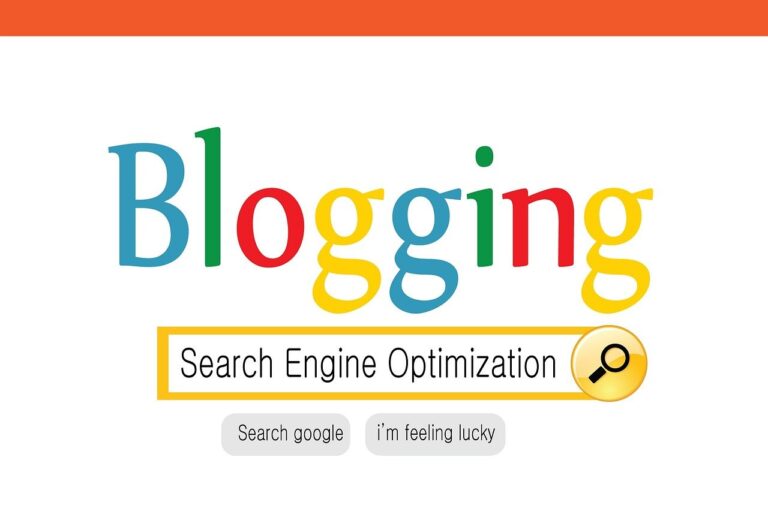In today’s digital landscape, having a professional website is crucial for holistic practitioners to establish their online presence and attract potential clients. A well-designed website serves as a virtual storefront, showcasing your expertise and services to a wider audience.
Creating an engaging and user-friendly website can significantly impact your practice’s growth and credibility in the holistic wellness field.

Your website should reflect your unique approach to holistic health while providing visitors with valuable information and a seamless browsing experience.
By incorporating key elements of holistic practitioner websites, you can create a digital platform that resonates with your target audience and effectively communicates your services.
As you embark on the journey of building your professional website, remember that it’s not just about aesthetics. Focus on creating a holistic website design that seamlessly integrates user experience, content strategy, and essential features to support your practice’s goals and engage potential clients.
Key Takeaways
- A professional website enhances credibility and attracts potential clients
- User-friendly design and valuable content are essential for engagement
- Integrate key features to support your practice’s goals and client needs
Understanding The Importance Of A Professional Website
A professional website is crucial for holistic practitioners to establish credibility, attract clients, and grow their practice. It serves as a digital storefront and central hub for your online presence.
Benefits Of Having A Professional Website
Creating a professional website offers numerous advantages for holistic practitioners. It enhances your visibility, allowing potential clients to find you easily online.
Your website also acts as a 24/7 information center, providing details about your services, pricing, and availability.
A well-designed site showcases your expertise through blog posts, testimonials, and case studies. This builds trust with prospective clients before they even contact you.
You can also use your website to offer online booking, saving time and streamlining your scheduling process.
Importantly, a professional website gives you control over your brand image and messaging. You can customize the design and content to reflect your unique approach and personality as a practitioner.
Common Challenges And How To Overcome Them
Many holistic practitioners face obstacles when creating a website. Cost is often a concern, but affordable options like Wix offer user-friendly platforms with customizable templates.
Technical skills can be another hurdle. To overcome this, consider taking online courses or hiring a web designer familiar with holistic practices.
Remember, your website doesn’t need to be perfect immediately – start simple and improve over time.
Keeping your site updated can be challenging. Set aside regular time for maintenance or delegate this task to a team member. Use a content calendar to plan blog posts and updates in advance.
Ensuring your website is mobile-friendly is crucial, as many clients will access it via smartphones. Choose a responsive design theme to automatically adjust your site for different screen sizes.
Design Principles For Holistic Practitioner Websites
Effective design principles are crucial for creating a professional and impactful website for holistic practitioners. A well-designed site enhances credibility, improves user experience, and attracts potential clients.
Choosing The Right Color Scheme
Selecting an appropriate color palette is essential for your holistic practitioner website. Opt for soothing, natural colors that reflect your practice’s essence. Earthy tones like greens, blues, and warm neutrals often work well.
Consider using a color scheme that creates a calming atmosphere for your visitors. Limit your palette to 3-4 main colors to maintain visual harmony.
Use contrasting colors sparingly to highlight important elements like call-to-action buttons or key information. Remember that different colors can evoke various emotions and associations, so choose wisely to align with your brand and services.
Importance Of A Clean And Simple Layout
A clean and simple layout is crucial for your holistic practitioner website. It helps visitors focus on your content and services without distractions.
Aim for a professional design that reflects the quality of your practice.
Use white space effectively to create visual breathing room and improve readability. Organize your content into logical sections with clear headings and subheadings.
Keep your navigation menu simple and intuitive. Use descriptive labels for your menu items to help visitors find what they need quickly. Consider using icons or images to represent different services or areas of your practice.
Mobile Responsiveness And Accessibility
In today’s digital landscape, mobile responsiveness is essential for your holistic practitioner website. Ensure your site looks great and functions well on all devices, from smartphones to tablets and desktops.
Use a responsive design that automatically adjusts to different screen sizes. Test your website on various devices to ensure a consistent user experience across platforms.
Prioritize accessibility to make your site usable for all visitors, including those with disabilities. Use alt text for images, ensure proper color contrast, and make sure your site can be navigated using a keyboard.
Consider implementing touch-friendly elements for mobile users, such as larger buttons and easy-to-tap menu items. Fast loading times are crucial for mobile users, so optimize your images and minimize unnecessary scripts.
Content Strategy For Holistic Practitioner Websites
A well-planned content strategy is crucial for holistic practitioner websites. It helps attract and engage potential clients while showcasing your expertise and unique approach to healing.
Crafting Clear Service Descriptions
Your service descriptions should be concise yet informative. Clearly explain what each treatment entails and its potential benefits. Use simple language to avoid confusing potential clients.
Break down complex concepts into easily digestible points. Consider using bullet points to highlight key aspects of each service.
Include pricing information when appropriate. This transparency can help build trust with potential clients.
Remember to update your service descriptions regularly. As your practice evolves, ensure your website reflects any new offerings or changes in your approach.
Highlighting Practitioner Credentials
Your credentials are a vital part of establishing trust with potential clients. Display your qualifications prominently on your website.
List your relevant degrees, certifications, and specialized training. Include the institutions where you received your education and any prestigious organizations you’re affiliated with.
Consider creating a dedicated “About” page that delves deeper into your professional journey. Share what inspired you to become a holistic practitioner and your philosophy of care.
Update your credentials regularly to reflect ongoing education and new certifications. This demonstrates your commitment to staying current in your field.
Incorporating Patient Testimonials
Patient testimonials can be powerful tools for building credibility and trust. They provide social proof of your effectiveness as a practitioner.
Always obtain permission before sharing client testimonials. Respect privacy by using only first names or initials if clients prefer.
Include a variety of testimonials that highlight different aspects of your practice. This could include your bedside manner, specific treatments, or overall results.
Consider using video testimonials for added impact. Seeing and hearing real patients share their experiences can be particularly compelling.
Place testimonials strategically throughout your website. You might include them on your homepage, service pages, and a dedicated testimonials page.
Enhancing User Experience

A professional website for holistic practitioners must prioritize user experience to effectively engage visitors and convert them into clients. Key elements include intuitive navigation, clear calls to action, and fast loading times.
Easy Navigation And Intuitive Menu Structure
Your website’s navigation should be simple and logical. Place your main menu prominently at the top of the page, using clear labels for each section. Limit the number of menu items to 5-7 to avoid overwhelming visitors.
Include a search function to help users quickly find specific information. Consider implementing a breadcrumb trail to show users their current location within your site structure.
Create a clear hierarchy of information, with the most important content easily accessible from the homepage. Use dropdown menus sparingly, and ensure they’re easy to interact with on both desktop and mobile devices.
Design elements that enhance user experience include consistent styling across all pages and a logical flow of information.
Effective Use Of Calls To Action
Strategically place calls to action (CTAs) throughout your website to guide users towards desired actions. Use action-oriented language that clearly communicates the benefit to the user.
Examples of effective CTAs for holistic practitioners:
- “Book Your Free Consultation”
- “Download Our Wellness Guide”
- “Sign Up for Our Newsletter”
Make your CTAs visually distinct from other elements on the page. Use contrasting colors, larger fonts, or button styles to draw attention.
Place primary CTAs above the fold on your homepage and at the end of service descriptions. Secondary CTAs can be included in sidebars or footers.
Test different CTA placements and designs to determine what works best for your audience. Creating engaging content around your CTAs can increase their effectiveness.
Ensuring Fast Load Times
Slow-loading websites frustrate users and can lead to high bounce rates. Aim for a load time of 3 seconds or less on both desktop and mobile devices.
To improve load times:
- Optimize images by compressing them and using appropriate file formats
- Minimize HTTP requests by combining files where possible
- Enable browser caching to store static content locally
- Use a content delivery network (CDN) to serve files from servers closer to the user
Regularly test your website’s speed using tools like Google PageSpeed Insights or GTmetrix. Address any issues these tools identify to maintain optimal performance.
Consider implementing lazy loading for images and videos, which loads content as the user scrolls down the page. This can significantly improve initial load times, especially on long pages.
Essential Website Features For Holistic Practitioners

A professional website for holistic practitioners requires key elements to effectively showcase services and connect with potential clients. These features enhance user experience, provide valuable information, and facilitate easy communication.
Online Booking And Appointment Scheduling
Implementing an online booking system is crucial for your holistic practice website. This feature allows clients to schedule appointments at their convenience, reducing phone calls and administrative work.
Choose a user-friendly booking platform that integrates seamlessly with your website. Ensure it displays available time slots clearly and allows clients to select services.
Include options for clients to provide relevant information before the appointment, such as health concerns or preferences. This helps you prepare better for each session.
Consider offering automated reminders via email or text to reduce no-shows. A cancellation and rescheduling policy should be easily accessible within the booking system.
Blog Section For Sharing Knowledge
A blog section on your website serves multiple purposes. It allows you to showcase your expertise in holistic practices and educate potential clients about your services.
Regularly update your blog with informative articles on various holistic health topics. This helps improve your website’s search engine rankings and positions you as an authority in your field.
Include a mix of content types such as how-to guides, wellness tips, and explanations of different holistic techniques. Use clear, concise language to make complex topics accessible to a general audience.
Encourage engagement by allowing comments on your blog posts. This creates a community around your practice and provides valuable feedback from readers.
Contact Information And Location Details
Make it easy for potential clients to reach you by prominently displaying your contact information. Include a dedicated contact page with a form for inquiries.
Provide multiple contact methods such as phone, email, and social media links. Clearly state your business hours and expected response times for each contact method.
If you have a physical location, include an embedded map on your website. Provide detailed directions and parking information to make it easy for clients to find you.
Consider adding a FAQ section to address common questions about your services, pricing, and appointment policies. This can help reduce the number of basic inquiries you receive.
Building Trust And Credibility

Establishing trust and credibility is crucial for holistic practitioners to attract and retain clients. By showcasing your qualifications, sharing success stories, and highlighting positive feedback, you can build a strong foundation of trust with potential clients.
Displaying Certifications And Memberships
Showcase your credentials prominently on your website to demonstrate your expertise and commitment to professional development. Create a dedicated section that lists your certifications, degrees, and memberships in relevant organizations. Include logos of certifying bodies and professional associations to add visual credibility.
Consider creating a brief explanation of each certification’s significance and how it benefits your clients. This helps visitors understand the value of your qualifications. Keep this information up-to-date as you acquire new certifications or renew existing ones.
Don’t forget to mention any ongoing education or specialized training you’ve completed. This shows your dedication to staying current in your field and providing the best possible care to your clients.
Sharing Success Stories And Case Studies
Present real-life examples of how you’ve helped clients achieve their health and wellness goals. Write detailed case studies that outline the client’s initial concerns, your approach, and the positive outcomes achieved.
Use a mix of formats to appeal to different learning styles:
- Written narratives
- Before and after photos (with client permission)
- Infographics showing progress over time
Ensure you maintain client confidentiality by using pseudonyms or obtaining explicit permission to share their stories. Focus on specific, measurable results to make your success stories more impactful and relatable to potential clients.
Consider including a variety of case studies that represent different health concerns you address in your practice. This demonstrates the breadth of your expertise and helps potential clients see how you might assist them with their specific needs.
Incorporating Reviews And Testimonials
Positive feedback from satisfied clients is a powerful tool for building trust. Display testimonials throughout your website, especially on your homepage and service pages.
Use a mix of formats to keep things interesting:
- Written quotes
- Video testimonials
- Star ratings
Include the client’s name (with permission) and relevant details like their age or health concern to add authenticity. Consider using a third-party review platform to collect and display reviews, as this can increase credibility.
Regularly update your testimonials to ensure they reflect your current services and expertise. Respond to any negative reviews professionally and constructively, demonstrating your commitment to client satisfaction.
Conclusion

Creating a professional website is crucial for holistic practitioners to establish a strong online presence. Your website serves as a digital storefront, showcasing your expertise and services to potential clients.
Remember to focus on clear, user-friendly design that reflects your unique approach to holistic healing. Incorporate elements that build trust and credibility with your audience.
Ensure your website is mobile-responsive and optimized for search engines. This will help you reach a broader audience and improve your visibility online.
Regularly update your content to keep it fresh and relevant. Share valuable information about your services, testimonials, and educational resources to engage visitors and demonstrate your expertise.
By implementing these strategies, you’ll create a professional and patient-centered website that effectively represents your holistic practice. Your online presence will become a powerful tool for attracting new clients and growing your business.
Remember, your website is an investment in your practice’s future. Take the time to create a site that truly reflects your values and expertise as a holistic practitioner.
Frequently Asked Questions

Creating a professional website for your holistic practice involves several key elements and strategies. These essential components help attract clients, showcase your services, and establish trust in your expertise.
What are the key components of a professional website for holistic practitioners?
A professional website for holistic practitioners should include clear service descriptions, an about page, contact information, and testimonials. Incorporate high-quality images that reflect your practice’s atmosphere and philosophy.
Your website should also feature a user-friendly navigation menu and responsive design for mobile devices. Consider adding a blog section to share insights and establish your expertise in holistic practices.
How can I ensure my website design resonates with clients seeking holistic services?
To resonate with clients, use calming colors and natural imagery that align with holistic principles. Incorporate elements that reflect your unique approach to wellness and healing.
Create a welcoming virtual space that mirrors the tranquil environment of your physical practice. Use authentic photos of your workspace and team to build a personal connection with potential clients.
What steps should I take to optimize my holistic practice website for search engines?
Start by researching keywords relevant to your specific holistic services and location. Incorporate these naturally into your website content, page titles, and meta descriptions.
Create valuable, informative content that addresses common questions about holistic practices. Ensure your website loads quickly and is mobile-friendly, as these factors influence search engine rankings.
How can I integrate online appointment scheduling into my professional website?
Choose a reliable online scheduling tool that integrates seamlessly with your website design. Place prominent “Book Now” buttons on your homepage and service pages for easy access.
Ensure the scheduling system syncs with your calendar to avoid double-bookings. Provide clear instructions for users and offer multiple appointment types to cater to different client needs.
What strategies can I use to showcase client testimonials and trust signals effectively?
Display brief, impactful client testimonials on your homepage and dedicate a separate page for more detailed success stories. Include photos of clients (with permission) to add authenticity.
Highlight any certifications, professional memberships, or awards in a visible area of your website. Consider adding trust badges from recognized holistic health organizations.
Incorporating Educational Content About Holistic Practices into Website Design
You can start by creating a blog or resources section. In this section, publish articles about holistic health topics. You can also offer downloadable guides or e-books on specific wellness subjects.
Another idea is to add a FAQ page addressing common questions about your holistic approach. Additionally, use infographics or short videos to explain complex concepts in an easily digestible format.






